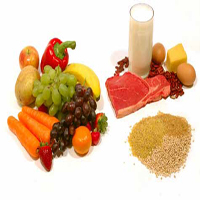
Macronutrients are nutrients that provide calories or energy and are required in large amounts to maintain body functions and carry out the activities of daily life. There are three broad classes of macronutrient: proteins, carbohydrates and fats. The food situation in the WHO Eastern Mediterranean Region has improved over the last four decades. However, the changes in food habits are not the same in all countries, which can be divided into three groups.
In low-income countries, the food consumption characteristics are the same as in many poor countries around the world. The daily caloric intake is insufficient (between 2000 kcal and 2300 kcal) and cereals contribute 60%–80% of total calorie intake.
In intermediate-income countries, the average per capita calorie supply is between 2700 kcal and 3000 kcal. Cereals contribute more than half of the calorie intake. Sugar consumption has risen considerably to reach an average level of 30 kg–40 kg/per capita/annum. Similarly, fat consumption has increased in several countries and contributes 20%–25% of the daily energy supply. The change in habitual dietary intakes in these countries is mainly due to increases among the upper and middle social classes in the last two decades following economic growth and the development of industry and services.
In high-income countries, the traditional diet, which consisted of dates, milk, fresh vegetables and fruits, whole wheat bread and fish, has changed to a more diversified diet with an excess intake of energy-dense foods rich in fat and free sugars and deficient in complex carbohydrates.


